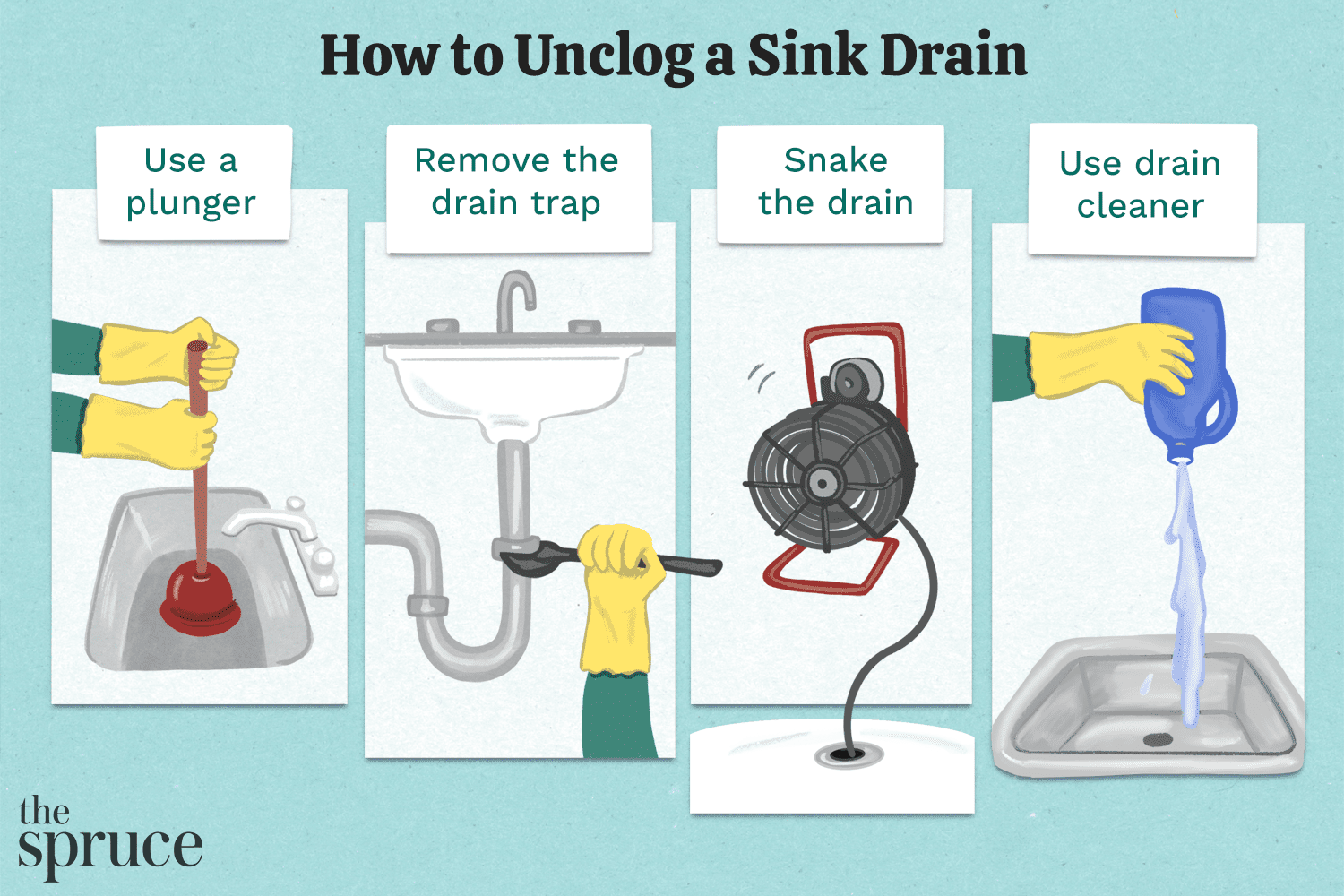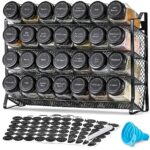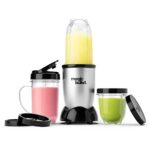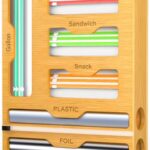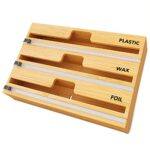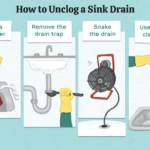A clogged kitchen sink can be a real hassle. Food scraps, grease, and soap buildup can block your drain, causing water to back up.
Knowing how to unclog your kitchen sink can save you time and money. In this guide, we will show you simple and effective methods to clear your kitchen sink drain. You don’t need to be a plumber to fix it yourself.
With common household items and a bit of patience, you can have your sink running smoothly again. Whether it’s a minor blockage or a stubborn clog, these tips will help you tackle the problem. So, let’s get started and restore your kitchen sink to its full functionality!

Credit: www.youtube.com
Common Causes Of Clogs
Understanding the common causes of clogs helps prevent kitchen sink blockages. Identifying the culprit behind your clog can make the unclogging process easier.
Food Waste
Food waste is a frequent cause of clogs. Scraps of food often slip down the drain during dishwashing. They then get stuck in the pipes, causing blockages. Starchy foods like pasta and rice swell with water, making the clog worse. Coffee grounds and eggshells are also common culprits.
| Common Food Waste | Impact on Drain |
|---|---|
| Pasta and Rice | Swells with water, creating blockages |
| Coffee Grounds | Forms thick sludge, clogs pipes |
| Eggshells | Small pieces get stuck in pipes |
Grease Buildup
Grease and oil are notorious for causing clogs. When hot, they flow easily down the drain. But once cooled, they solidify and stick to the pipes. Over time, this buildup narrows the pipe and blocks water flow.
To prevent grease clogs, avoid pouring grease down the sink. Instead, let it cool and dispose of it in the trash.
Foreign Objects
Foreign objects can accidentally fall into the sink. Items like utensils, small toys, and jewelry often end up in the drain. These objects create major blockages.
Use a drain cover to catch foreign objects and prevent them from entering the pipes. Regularly check and clean the cover to ensure effective drainage.
Essential Tools Needed
Unclogging a kitchen sink can feel like a daunting task. Yet, with the right tools, it becomes manageable and even straightforward. In this section, we will explore the essential tools needed for this task. These tools will help you tackle most clogs with ease.
Plunger
A plunger is a basic and effective tool. It works by creating suction to dislodge the clog. Here is how to use it:
- Fill the sink with some water.
- Place the plunger over the drain.
- Push and pull the plunger quickly.
- Repeat until the water drains.
This simple tool can often clear minor clogs without much hassle.
Drain Snake
A drain snake is another valuable tool. It helps reach deeper clogs that a plunger cannot. Here’s a step-by-step guide:
- Insert the snake into the drain.
- Turn the handle to push it further.
- When you feel resistance, you’ve hit the clog.
- Twist and pull the snake to break up the clog.
- Remove the snake and run water to check the drain.
This tool is especially useful for stubborn clogs.
Baking Soda And Vinegar
Baking soda and vinegar are natural and safe. They can dissolve clogs without harsh chemicals. Follow these steps:
- Pour a pot of boiling water down the drain.
- Add one cup of baking soda.
- Pour one cup of vinegar into the drain.
- Cover the drain and wait for 10 minutes.
- Flush with boiling water again.
This method is eco-friendly and effective for minor clogs.
Using A Plunger
Kitchen sinks often get clogged due to food debris, grease, and soap buildup. One effective way to handle this issue is by utilizing a drain snake. This tool can navigate through the pipe and remove stubborn clogs. Follow these steps to use a drain snake to unclog your kitchen sink.
Inserting The Snake
First, remove the drain cover. Then, slowly insert the snake into the drain. Turn the handle to push the snake further down the pipe. Continue until you feel resistance.
Removing The Clog
Once you feel resistance, rotate the snake to hook the clog. Gently pull the snake out with the clog attached. Dispose of the debris and repeat if necessary. Finally, run water to check if the sink drains properly.
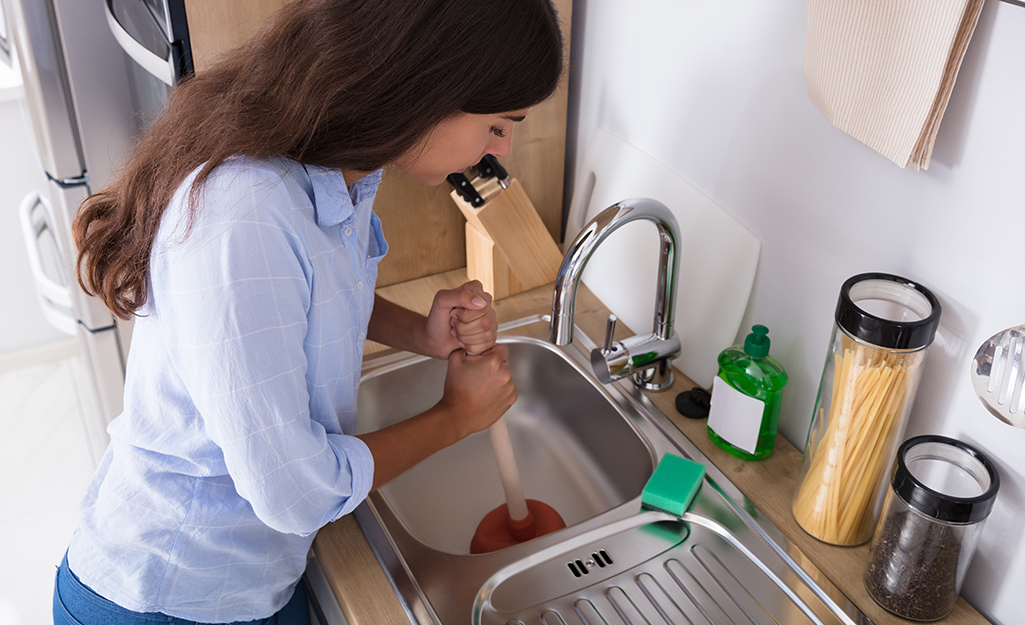
Credit: www.homedepot.com
Utilizing A Drain Snake
Struggling with a clogged kitchen sink? Don’t worry. You don’t always need harsh chemicals or a plumber. Homemade cleaning solutions can do the trick. They are eco-friendly and easy to make. Let’s explore some effective methods.
Baking Soda And Vinegar
Baking soda and vinegar are powerful cleaning agents. They work wonders on clogged sinks. Here’s a step-by-step guide:
- Pour a pot of boiling water down the drain.
- Add 1 cup of baking soda. Let it sit for a few minutes.
- Pour 1 cup of vinegar into the drain. Cover it with a plug.
- Wait for 10 minutes. You will hear fizzing sounds.
- Flush the drain with another pot of boiling water.
This method breaks down grease and grime. It leaves your sink fresh and clean.
Boiling Water
Boiling water is the simplest solution. It’s perfect for minor clogs. Follow these steps:
- Heat a large pot of water until it boils.
- Carefully pour the boiling water down the drain.
- Wait a few minutes and check if the clog is gone.
If the clog persists, repeat the process. Boiling water can dissolve soap and grease buildup.
These homemade cleaning solutions are easy and effective. They save you time and money. Plus, they are safe for your pipes. Try them out the next time your kitchen sink clogs.
Homemade Cleaning Solutions
Unclogging a kitchen sink can be a frustrating task. So, it’s best to take preventive measures to avoid the hassle. Simple steps can keep your sink clean and free from clogs. Let’s explore some easy tips to maintain a clog-free kitchen sink.
Regular Cleaning
Keeping your sink clean is crucial. Make it a habit to clean your sink regularly. Rinse the sink with hot water after each use. This helps remove any leftover food particles. Use a mixture of vinegar and baking soda once a week.
| Step | Description |
|---|---|
| 1 | Pour 1/2 cup of baking soda down the drain. |
| 2 | Follow with 1/2 cup of vinegar. |
| 3 | Let it sit for 10-15 minutes. |
| 4 | Flush with hot water. |
This simple routine helps prevent clogs and keeps your sink smelling fresh.
Avoiding Grease Disposal
One of the main causes of clogs is grease. Grease can harden in the pipes and create blockages. Avoid pouring grease or oil down the drain. Instead, let it cool and dispose of it in the trash.
Use a grease container to collect used oil. Here’s a simple way to handle grease:
- After cooking, let the grease cool.
- Pour the cooled grease into a container.
- Seal the container and throw it in the trash.
By disposing of grease properly, you can prevent stubborn clogs in your kitchen sink.
Preventive Measures
Unclogging a kitchen sink can sometimes be straightforward. But not always. There are times when a professional’s help is essential. This section will guide you on those occasions.
Persistent Clogs
Sometimes, clogs in the kitchen sink won’t go away. You might try plungers, baking soda, or vinegar. Yet, the water still drains slowly or not at all. This is a sign of a persistent clog.
A persistent clog often indicates a deeper issue. The blockage might be further down the pipe. Or you might have a buildup that common methods can’t fix. In such cases, a professional plumber has the tools and expertise to solve the problem.
Damaged Pipes
Clogs can sometimes cause damage to the pipes. Older pipes might crack or break under pressure. This can lead to leaks. Leaks can cause water damage to your home.
If you suspect damaged pipes, it’s time to call a professional. They can inspect the pipes and determine the best course of action. They might repair the pipes or replace them if necessary.
Below is a table that summarizes when to call a professional:
| Situation | Reason |
|---|---|
| Persistent Clogs | Deeper issues or buildup that common methods can’t fix |
| Damaged Pipes | Pipes might be cracked or broken, causing leaks |
In summary, knowing when to call a professional can save you time and prevent further damage. Persistent clogs and damaged pipes are clear signs that professional help is needed.
When To Call A Professional
Maintaining a clog-free kitchen sink is essential for a smooth-running household. A clogged sink can disrupt your daily routine and lead to costly repairs. Simple habits can keep your sink in top shape. Learn how to avoid blockages and keep water flowing freely.
Proper Waste Disposal
One key to a clog-free sink is proper waste disposal. Food scraps should never go down the drain. Use a compost bin for organic waste. Dispose of cooking grease in a separate container. Grease can harden and cause blockages. Never pour coffee grounds down the sink. They can clump together and create a solid mass.
Routine Inspections
Regular inspections can prevent clogs. Check your sink drain every week. Look for slow draining water or strange odors. These can be signs of a developing clog. Use a flashlight to inspect the drain for visible debris. Remove any buildup with a pair of tongs or tweezers. Pour hot water down the drain monthly. This can help dissolve any grease or soap scum. Consider using a drain cover to catch food particles and hair.
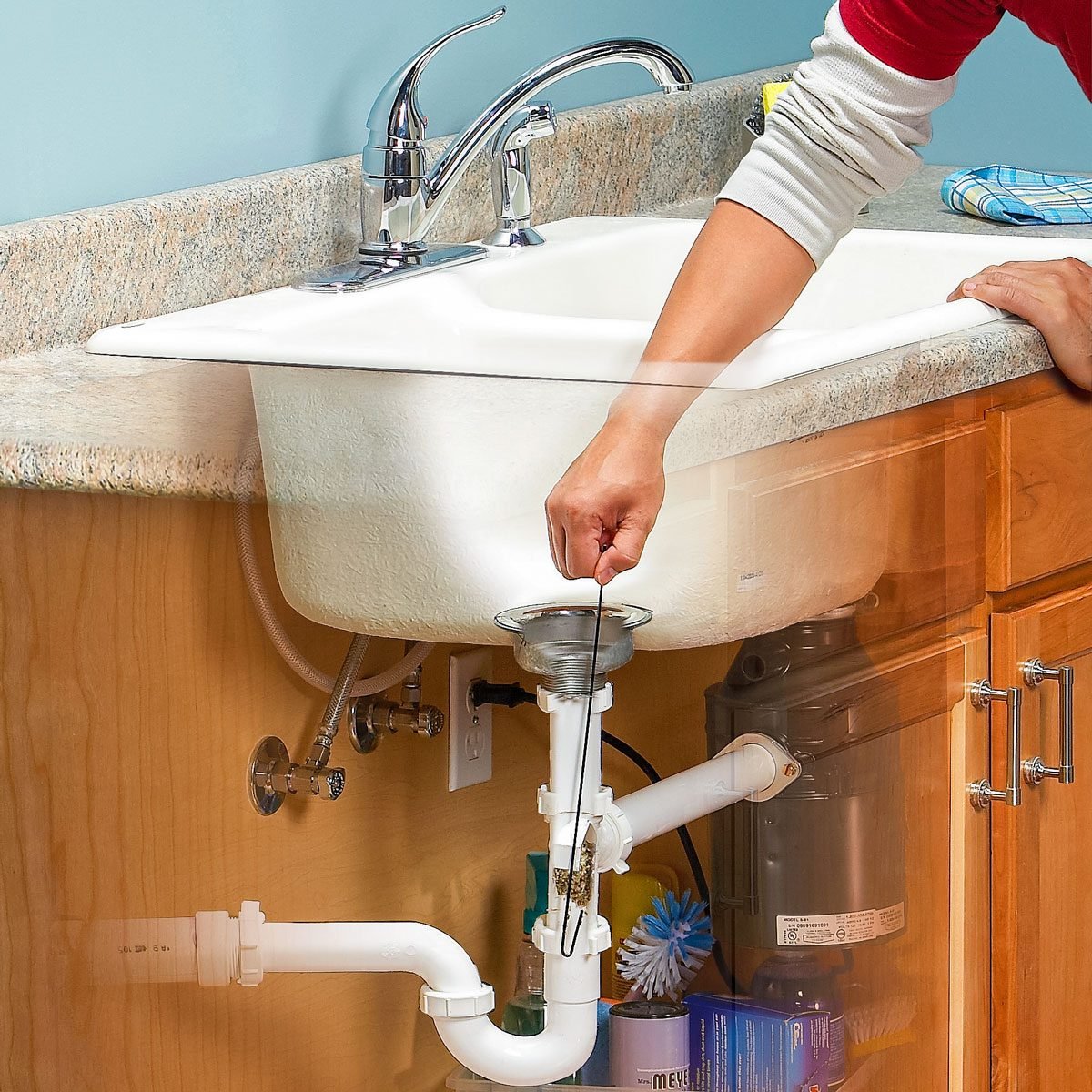
Credit: www.familyhandyman.com
Frequently Asked Questions
How To Unclog Kitchen Sink Naturally?
You can unclog a kitchen sink using baking soda and vinegar. Pour half a cup of baking soda, followed by half a cup of vinegar. Let it sit for 15 minutes, then flush with hot water.
What Causes Kitchen Sinks To Clog?
Kitchen sinks often clog due to food particles, grease, and soap scum. These substances build up over time, causing blockages in the pipes.
Can Boiling Water Unclog A Sink?
Yes, boiling water can help unclog a kitchen sink. Pour boiling water down the drain to dissolve minor blockages caused by grease or soap.
How To Prevent Kitchen Sink Clogs?
Prevent kitchen sink clogs by avoiding pouring grease down the drain. Use a drain strainer to catch food particles and clean it regularly.
Conclusion
Clearing a kitchen sink clog is simple with these steps. Start with boiling water. Then try a plunger. Baking soda and vinegar work too. Use a plumber’s snake for tough clogs. Regular maintenance prevents future blockages. Keep your sink clean to avoid problems.
Remember, small actions can save you big headaches. Happy unclogging!

